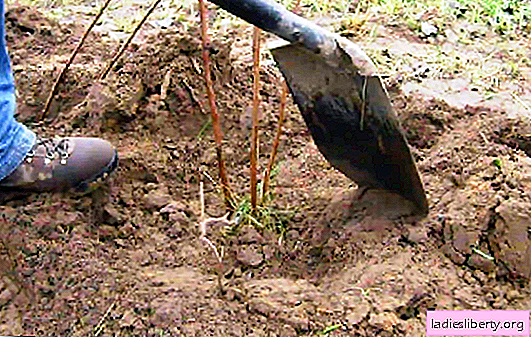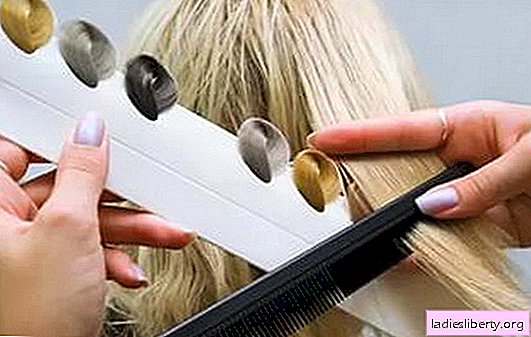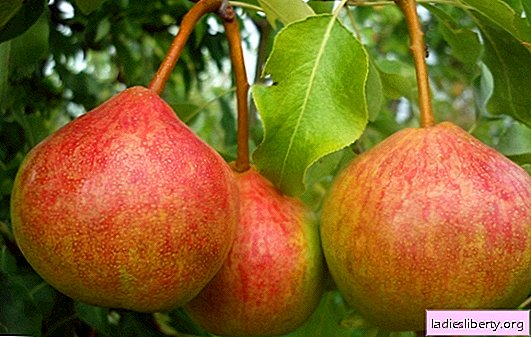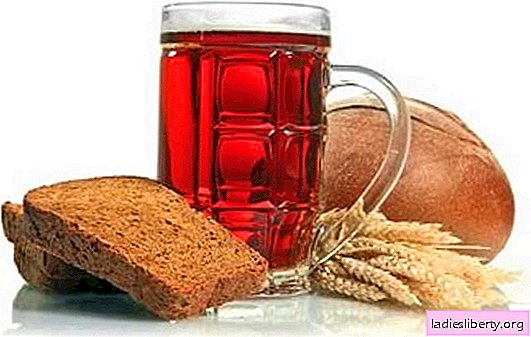
Repairing raspberries bear fruit twice a year - in summer and late autumn. Moreover, autumn fruiting is usually more plentiful than spring, and gardeners are very fond of such raspberries because it supplies us with fresh berries longer than ordinary raspberries. Let's try to figure out what features the autumn landing of remont raspberries has.
The choice of seedlings for planting remont raspberries in the fall
It is optimal to choose seedlings in containers for such a planting. If during spring planting it is recommended to cut the seedlings in order to provoke tillering, then during autumn planting the seedlings should not be cut at all. On the contrary, it is desirable that the seedlings remain whole leaves, and he received enough energy from the sun to form the root system. If you are propagating raspberries with root branches or separation from the bush, it is advisable to take out the branches and part of the bush along with the ground to keep the roots intact. In the case when it is impossible to save land on the roots, or seedlings in containers are not available, planting is better to postpone, since in this case it is almost impossible to purchase raspberry seedlings with foliage on the shoots, and without it, survival in the fall will be lower.
Good raspberry layering without a container:

Choosing a place for planting and planting scheme for remont raspberries in autumn
For repair raspberries, it is optimal to select areas with light sandy and sandy loamy soils on the southern slopes of the hills with a slight slope. In case you have to plant raspberries on the northern part of the slope, take care of sufficient protection from the winds by planting trees on the north side.
It is desirable that the site is well lit - this is the guarantee of good autumn fruiting of remont raspberries. Do not plant raspberries as a compacting garden crop between rows of trees or near buildings that block the light from two or more sides - in this case you will be disappointed with low yields. Raspberry loves good lighting.
Raspberries also do not like the high location of groundwater in the soilTherefore, it does not make sense to plant it in wetlands. Other crops can be recommended for such sites, for example, blackcurrant, which grows well even when groundwater occurs at a depth of half a meter.
Planting remont raspberries in both autumn and spring is carried out in a square-nesting manner. On the raspberry patch, cells are broken, seedlings are planted every half meter in width and length. For the convenience of courtship and harvesting, the site is divided into ridges one meter wide and arbitrary in length. Between them make tracks with a width of about 40 cm, so that they can be moved. With a high level of groundwater, it is recommended that before planting raspberries, pour ridges of a mixture of sand and fine gravel about half a meter high, on top of them a layer of earth 20-30 cm, and only plant raspberries in it. Passages between ridges should also be left about 40 cm wide.
In the future, raspberries begin to actively cluster, old shoots die off, new ones grow in their place, and then one continuous array of raspberry shoots, fruiting, growing or old, which needs to be cut, is formed.
Planting Technology for Removable Raspberries in Autumn
The technology for planting remontant raspberries in autumn is the same as for planting blackberries, currants, and other bush garden crops. Before planting, determine where the seedling will grow. Then, a hole about 30-40 cm deep is dug in this place, depending on the size of the root system of the seedling. Down the holes put rotted manure or humus.
A seedling is exempted from the pot if it is in a plastic or paper pot. If the seedling is in an eco-pot, in a pot of humus or in a container that collapses in the ground, it does not need to be removed. Before harvesting, it is advisable to water the seedling a little so that the earth around the roots becomes denser and does not crumble when planting.
A seedling is placed in the hole, and is held with one hand. The earth is poured into the voids between the root system and the edges of the hole and crushed. At the end of planting, the earth is compacted with hands and watered, after watering, they fill the earth and mulch the soil.
Landing photo:

Raspberries are very willing to respond to mulching the soil both after planting, and in the process of growing. Mulch grassy shoots of raspberries can be peat, and sawdust, and even dry grass. After the autumn planting of repair raspberries, it is mulched with a layer of about 10 cm. If you mulch with grass or peat, it will also be organic fertilizer on the area where raspberries grow.
The need for constant watering of seedlings planted in the fall, as a rule, it does not occur, since it rains quite well. However, if the autumn is dry, you need to water the seedlings after planting at least once a week. When watering, it is advisable to dissolve potash fertilizers in water, they help the growth and survival of the root system.
Autumn transplant of remont raspberries
Raspberries are a culture that reacts very painfully to transplants. Be prepared in advance for the fact that you will wait two years for the crop after transplantation, and do not rush to cut the seedlings - for example, I have raspberries after the transplant yielded crops only for the third year. Now she bears fruit abundantly, even better than in the old place.
When transplanting, take out such parts of the bushes so that they are as large as possible. The root system should be removed from the soil with the earth. When transplanting, it is convenient to use a bayonet shovel for excavation and a pruner for pruning the roots. The roots are trimmed so that their parts remain at least 30 cm long. The tops of the shoots during transplantation do not need to be cut. Plant as the bush grew in its old place, with shoots and leaves.
Transplant raspberries in a square-nesting manner, leaving a distance between the seedlings of half a meter. A hole is dug in the ground 10 cm deeper than the height of the root system of the seedling. Well-rotted manure or humus is poured into it. Then a seedling is placed, sprinkled with earth, the earth is compacted and watered. It is better to water from a watering can, several times, to ensure the gradual penetration of water into the soil.
Preparation of the planted raspberry planted in the fall for winter
As a rule, no additional measures are required to prepare raspberries for winter after planting. If the winter is snowy enough, then even with large frosts the young shoots of raspberries will be completely covered with snow and will not freeze.
Nevertheless, if you replanted bushes, and they are tall enough, you can take care of their shelter for the winter. To do this, the bush is bent to the ground with a twine and small wire pins that are fixed in the ground. In this case, it will be covered with snow entirely.
To provide a reliable shelter with snow, people come to the site after the first snowfalls and tear off snow to the places where raspberries grow, providing an artificially created snowdrift. This will provide additional thermal insulation, and will allow to "utilize" the snow after clearing the garden paths, without taking it out of the site.
It is extremely undesirable to cut the repair raspberries for the winter, this is my sad experience. Those bushes that were cut by winter did not bear fruit the next year and even a year later. The same bushes that wintered “as is” felt great and gave a normal crop.
Features fruiting remontant raspberries
After planting, the remont raspberry comes into bearing somewhat later than usual. In this bush culture, alternating fruiting of shoots is observed - the same shoot gives a crop in a year. In remontant raspberries, two- and even three-year-old shoots usually yield crops. Therefore, do not be too zealous in thinning raspberries and cutting too old seedlings, they can give a good harvest.
Sometimes, quite rarely, it happens that the whole planted raspberry begins to bear fruit periodically, after a year. This is offset by a plentiful harvest, but still most of us would like to get fresh berries regularly. Usually this occurs due to overfeeding with nitrogen and organic fertilizers, or due to the characteristics of the variety. It can also occur due to frost when raspberry flowers die.
Typically, this problem can be solved by feeding superphosphates or other fertilizers containing it. There are also special formulations for spraying, which provoke flowering and fruiting. If there is a chance of frost during flowering, take action. As a rule, the first crop of repair raspberries is smaller precisely because part of the color dies from frost. Cover the bushes at night with a special geotissue, or make nightly fumigation of remont raspberries during frost.











